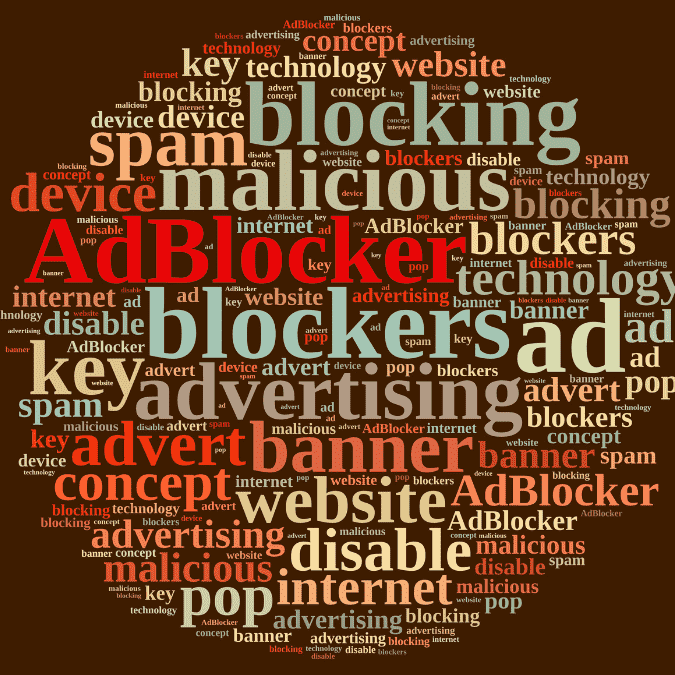
Ad Network Blocker: Understanding the Impact on Digital Advertising

An ad network blocker is a software tool that prevents advertisements from being displayed on websites, mobile apps, and other digital platforms. Ad blockers have gained significant popularity among users who seek an uninterrupted browsing experience, free from intrusive ads. However, the rise of ad blocking has had a profound impact on the digital advertising industry, affecting publishers, advertisers, and ad networks alike. In this article, we’ll explore the implications of ad network blockers and discuss strategies for navigating this challenging landscape.
Ad blocking technology works by identifying and filtering out ad content before it is loaded on a user’s device. Ad blockers use various methods to detect ads, such as analyzing the source code of web pages, matching URLs against known ad server domains, or leveraging machine learning algorithms to identify ad patterns. By preventing ads from being displayed, ad blockers disrupt the traditional revenue model of digital advertising, where publishers rely on ad impressions and clicks to generate income.
The Impact of Ad Blocking on Publishers
Publishers are among the most affected parties by the rise of ad network blockers. Many websites and digital platforms rely on advertising revenue to sustain their operations, produce content, and offer free services to users. When ads are blocked, publishers experience a significant reduction in ad impressions and clicks, leading to a decline in revenue.
To mitigate the impact of ad blocking, publishers have explored various strategies, such as:
- Detecting Ad Blockers: Some publishers implement ad blocker detection scripts that identify when a user has an ad blocker enabled. They may display messages requesting users to disable their ad blocker or offer ad-light experiences for a fee.
- Native Advertising: Publishers are increasingly shifting towards native advertising, where sponsored content is seamlessly integrated into the website’s design and editorial flow. Native ads are less likely to be blocked by ad blockers, as they resemble regular content.
- Subscription Models: Some publishers have adopted subscription-based models, where users pay a recurring fee to access ad-free content. This approach allows publishers to generate revenue directly from their audience, reducing their reliance on advertising.
- Server-Side Ad Insertion: Publishers can implement server-side ad insertion techniques, where ads are dynamically inserted into the content before it is delivered to the user’s device. This makes it more challenging for ad blockers to detect and filter out the ads.
While these strategies can help mitigate the impact of ad blocking, publishers still face the challenge of balancing user experience with revenue generation in an increasingly ad-averse environment.
The Impact of Ad Blocking on Advertisers and Ad Networks
Advertisers and ad networks are also affected by the proliferation of ad blockers. When ads are blocked, advertisers lose valuable opportunities to reach and engage their target audience. This can lead to reduced brand visibility, lower click-through rates (CTR), and diminished return on investment (ROI) for advertising campaigns.
To address the challenges posed by ad blockers, advertisers and ad networks are exploring alternative strategies, such as:
- Contextual Advertising: Advertisers are shifting towards contextual advertising, where ads are placed based on the content of the web page rather than user behavior or demographics. Contextual ads are less likely to be blocked, as they are relevant to the user’s interests.
- Whitelisting and Acceptable Ads: Some ad blockers offer whitelisting programs or “acceptable ads” initiatives, where non-intrusive ads that meet specific criteria are allowed to be displayed. Advertisers and ad networks can participate in these programs to reach ad-blocking users.
- Native Advertising Platforms: Ad networks are developing native advertising platforms that deliver sponsored content seamlessly integrated into the user experience. These platforms leverage advanced targeting and personalization techniques to ensure the relevance and effectiveness of native ads.
- User Consent and Transparency: Advertisers and ad networks are focusing on obtaining user consent and providing transparency about data collection and ad targeting practices. By building trust and giving users control over their ad experiences, they aim to reduce the motivation for ad blocking.
Best Practices for Navigating the Ad Blocking Landscape
To effectively navigate the ad blocking landscape, publishers, advertisers, and ad networks should consider the following best practices:
- Prioritize User Experience: Focus on creating high-quality, relevant, and non-intrusive ad experiences that enhance rather than disrupt the user’s browsing journey. Avoid aggressive ad formats like pop-ups, auto-playing videos, or flashing banners.
- Embrace Transparency and User Control: Be transparent about data collection practices and provide users with control over their ad preferences. Clearly communicate the value exchange of free content supported by advertising and offer options for ad personalization or opt-out.
- Invest in Ad Quality and Relevance: Prioritize ad quality and relevance by leveraging advanced targeting techniques, contextual advertising, and native ad formats. Deliver ads that align with user interests and complement the content they are consuming.
- Foster Trust and User Engagement: Build trust with users by adhering to industry standards, respecting user privacy, and delivering a positive ad experience. Engage users through interactive and value-added ad formats that encourage participation and brand interaction.
- Monitor and Adapt to Changing Trends: Stay informed about the latest ad blocking trends, technologies, and user preferences. Continuously monitor ad performance metrics and adapt strategies accordingly to optimize ad delivery and effectiveness in the face of ad blocking.
Conclusion
Ad network blockers have disrupted the traditional digital advertising ecosystem, presenting challenges for publishers, advertisers, and ad networks. As ad blocking becomes more prevalent, stakeholders must adapt their strategies to navigate this evolving landscape. By prioritizing user experience, embracing transparency, investing in ad quality, and fostering trust, the industry can find sustainable ways to monetize digital content while respecting user preferences. Collaboration and innovation among publishers, advertisers, and ad networks will be crucial in developing effective solutions that balance the needs of all parties involved.